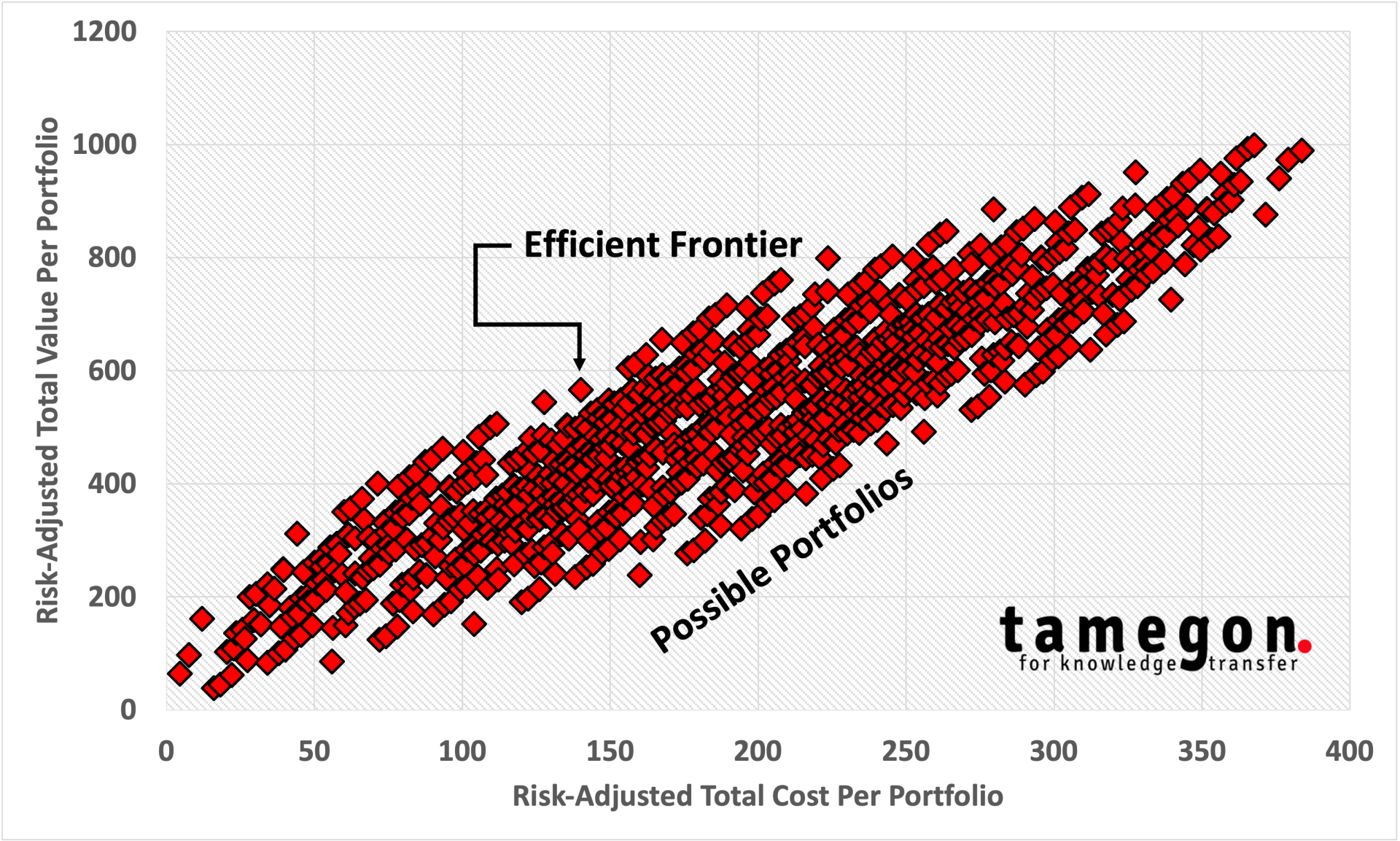Portfolio management art or science?
Dr Costas Chryssou
March 20, 2022
tamegon Innovation and Growth Advisory Firm
Senior managers and PMO staff, in all organisations, increasingly recognise that one of the most efficient ways of ensuring that their projects and programmes deliver the intended value for the organisation is through formal portfolio management.
A recent PMI survey [1] reported that 55% of organisations frequently use formal portfolio management, a 5% increase over the previous year. Similarly, a PwC survey [2] reports that 53% of respondents across industries and sectors from retail, insurance, auto, banking to manufacturing and telecommunications, use portfolio management techniques and methodologies.
Effective portfolio management entails the constant allocation of scarce resources to projects by balancing cost, risk, and financial or strategic benefits or risk avoidance and any dependencies between projects. The task is complex and onerous since many options of viable combinations of project portfolios are present and multiple stakeholders, sometimes with conflicting agendas, compete for scarce resources.
Portfolio management allows the executive team to obtain a holistic view across the group of projects and programmes allowing them to understand the portfolio's value and strategic alignment - 'show me your project portfolio and I will show you your strategy'. Portfolio management employs three basic approaches:
- value maximisation,
- resource optimisation,
- risk diversification.
Portfolio management involves ‘art’ and ‘science’ skills.
I used in the blog’s title the question “portfolio management: ‘art’ or ‘science?" because I recently came across an article explaining how Google has built image recognition software that enables an artificial neural network of computers to see shapes in images; the by-product of this is some surprisingly creative and unusual pictures [3] – culmination of ‘art’ and ‘science’! This is also the case with portfolio management.
The ‘science’ part may entail plotting all possible portfolio combinations to identify those that represent best value for money; based on the constraints we have imposed (cost, benefit, risk, resources and inter-dependencies, and any possible mandatory projects). These value-for-money portfolio picks represent the ‘efficient frontier’ of the portfolio – the portfolios along the top edge of the plot cluster, as shown in the schematic.

Such an approach not only allows us to identify the most high value portfolio combinations, but also to directly compare portfolio picks that include both financial and strategic benefits, and plot risk-adjusted values against risk-adjusted costs on a scale of arbitrary units; the scale will be a reflection of the value that the organisation puts on the various benefit categories.
And here is where the ‘art’ part comes into play. The efficient frontier methodology, although powerful and value-adding, cannot substitute for effective decision-making from the senior executive team. It is senior executives that need to select the most appropriate portfolio best aligned to the strategy of the organisation and it is for them to determine the type and balance of benefits they are looking to realise by executing the 'right' portfolio of projects.
Find out how our project portfolio optimisation tool can assist your organisation with maximising value from your change and innovation project portfolio here.
[1] http://www.pmi.org/~/media/PDF/Research/2012_Pulse_of_the_profession.ashx
[2] http://www.pwc.com/mx/es/industrias/proyectos-capital/archivo/7930526410-insight-trends.pdf
[3] https://news.artnet.com/market/google-inceptionism-art-sells-big-7930526410

Costas Chryssou
MBA, PhD
Founder and Managing Director
Sign up for our
articles
Sign up to our newsletter











